Vibrations transmitted from human hands to upper arm, shoulder, back, neck, and head
- PMID: 29123326
- PMCID: PMC5672949
- DOI: 10.1016/j.ergon.2016.07.001
Vibrations transmitted from human hands to upper arm, shoulder, back, neck, and head
Abstract
Some powered hand tools can generate significant vibration at frequencies below 25 Hz. It is not clear whether such vibration can be effectively transmitted to the upper arm, shoulder, neck, and head and cause adverse effects in these substructures. The objective of this study is to investigate the vibration transmission from the human hands to these substructures. Eight human subjects participated in the experiment, which was conducted on a 1-D vibration test system. Unlike many vibration transmission studies, both the right and left hand-arm systems were simultaneously exposed to the vibration to simulate a working posture in the experiment. A laser vibrometer and three accelerometers were used to measure the vibration transmitted to the substructures. The apparent mass at the palm of each hand was also measured to help in understanding the transmitted vibration and biodynamic response. This study found that the upper arm resonance frequency was 7-12 Hz, the shoulder resonance was 7-9 Hz, and the back and neck resonances were 6-7 Hz. The responses were affected by the hand-arm posture, applied hand force, and vibration magnitude. The transmissibility measured on the upper arm had a trend similar to that of the apparent mass measured at the palm in their major resonant frequency ranges. The implications of the results are discussed.
Relevance to industry: Musculoskeletal disorders (MSDs) of the shoulder and neck are important issues among many workers. Many of these workers use heavy-duty powered hand tools. The combined mechanical loads and vibration exposures are among the major factors contributing to the development of MSDs. The vibration characteristics of the body segments examined in this study can be used to help understand MSDs and to help develop more effective intervention methods.
Keywords: Hand-arm vibration; Hand-transmitted vibration; Head; Neck; Shoulder.
Figures


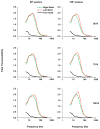
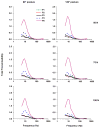


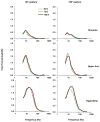


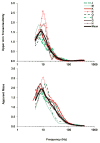
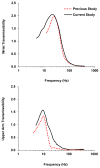

Similar articles
-
An examination of the vibration transmissibility of the hand-arm system in three orthogonal directions.Int J Ind Ergon. 2015 Feb;45:21-34. doi: 10.1016/j.ergon.2014.11.001. Int J Ind Ergon. 2015. PMID: 26635424 Free PMC article.
-
The effects of vibration-reducing gloves on finger vibration.Int J Ind Ergon. 2014 Jan;44(1):45-59. doi: 10.1016/j.ergon.2013.10.003. Int J Ind Ergon. 2014. PMID: 26543297 Free PMC article.
-
A longitudinal study of neck and upper limb musculoskeletal disorders and alternative measures of vibration exposure.Int Arch Occup Environ Health. 2016 Aug;89(6):923-33. doi: 10.1007/s00420-016-1131-9. Epub 2016 Apr 18. Int Arch Occup Environ Health. 2016. PMID: 27091648
-
Vibration and Ergonomic Exposures Associated With Musculoskeletal Disorders of the Shoulder and Neck.Saf Health Work. 2018 Jun;9(2):125-132. doi: 10.1016/j.shaw.2017.10.003. Epub 2017 Oct 28. Saf Health Work. 2018. PMID: 29928524 Free PMC article. Review.
-
[Neck and upper limb disorders caused by combined exposures to ergonomic risk factors and hand-transmitted vibration].G Ital Med Lav Ergon. 2008 Jul-Sep;30(3 Suppl):39-45. G Ital Med Lav Ergon. 2008. PMID: 19288788 Review. Italian.
Cited by
-
A Review of Hand-Arm Vibration Studies Conducted by US NIOSH since 2000.Vibration. 2021 Jun 15;4(2):482-528. doi: 10.3390/vibration4020030. Vibration. 2021. PMID: 34414357 Free PMC article.
-
A Supernumerary Soft Robotic Limb for Reducing Hand-Arm Vibration Syndromes Risks.Front Robot AI. 2021 Aug 17;8:650613. doi: 10.3389/frobt.2021.650613. eCollection 2021. Front Robot AI. 2021. PMID: 34490355 Free PMC article.
-
The relationships between hand coupling force and vibration biodynamic responses of the hand-arm system.Ergonomics. 2018 Jun;61(6):818-830. doi: 10.1080/00140139.2017.1398843. Epub 2017 Nov 17. Ergonomics. 2018. PMID: 29086628 Free PMC article.
-
Combined Effects of Noise and Hand-transmitted Vibration on Workers' Muscle and Mental Fatigues in a Simulated Construction Operation.Med Lav. 2023 Apr 13;114(2):e2023021. doi: 10.23749/mdl.v114i2.13903. Med Lav. 2023. PMID: 37057353 Free PMC article.
References
-
- Aatola S. Transmission of vibration to the wrist and comparison of frequency response function estimators. J Sound Vib. 1989;131:497–507.
-
- Adewusi SA, Rakheja S, Marcotte P, Boutin J. Vibration transmissibility characteristics of the human hand-arm system under different postures, hand forces and excitation levels. J Sound Vib. 2010;329:2953–2971.
-
- Ariens GA, Van Mechelen W, Bongers PM, Bouter LM, Van der Wal G. Physical risk factors for neck pain. Scan J Work Environ Health. 2000;26(1):7–19. - PubMed
-
- Bernard BP. Musculoskeletal Disorders and Workplace Factors. NIOSH; Cincinnati: 1997. A critical review of epidemiologic evidence for work-related musculoskeletal disorders of the neck, upper-extremity, and low back. DHHS (NIOSH) publication.
-
- Bovenzi M, Fiorito A, Volpe C. Bone and joint disorders in the upper extremities of chipping and grinding operators. Int Achieves Occup Environ Health. 1987;59:189–198. - PubMed
Grants and funding
LinkOut - more resources
Full Text Sources
Other Literature Sources
